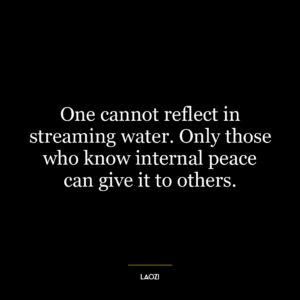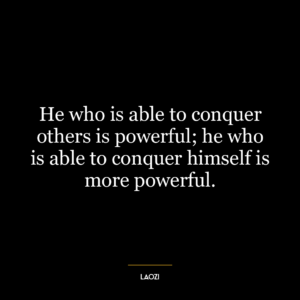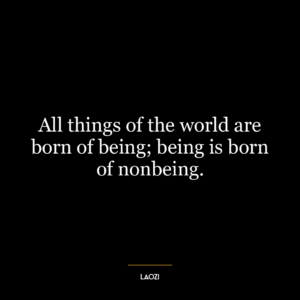Who can wait quietly until the mud settles? Who can remain still until the moment of action?
This quote is a metaphorical representation of the importance of patience, stillness, and mindfulness. The first part, “Who can wait quietly until the mud settles?” symbolizes the idea that in times of chaos or confusion (represented by the stirred-up mud), it’s crucial to remain patient and calm, rather than rushing to take action. Just as the mud in water will naturally settle if given time, clarity and understanding can also emerge from a chaotic situation if one is willing to wait.
The second part, ”Who can remain still until the moment of action?” emphasizes the importance of stillness and presence. It suggests the need to resist the urge to constantly act or react, and instead, to remain still, observant, and prepared until the right moment for action arrives. This part of the quote underscores the significance of timing, suggesting that the effectiveness of our actions is often determined not just by what we do, but when we do it.
Applied to today’s fast-paced world, this quote is a reminder to resist the pressure to constantly react or keep busy. Instead, it encourages us to cultivate patience, to take time to understand the situation fully before acting, and to recognize the value of stillness and presence. In a world where we are often encouraged to act quickly and decisively, Laozi’s words remind us that there is wisdom in waiting for the right moment.
In terms of personal development, this quote could be applied to decision-making, problem-solving, and stress management. It suggests that instead of making hasty decisions or jumping into action when faced with a problem, we should take time to fully understand the situation, to let the “mud” of our confusion or uncertainty settle. By cultivating patience and stillness, we can make more thoughtful, informed decisions, and respond to challenges in a more balanced and effective way.















